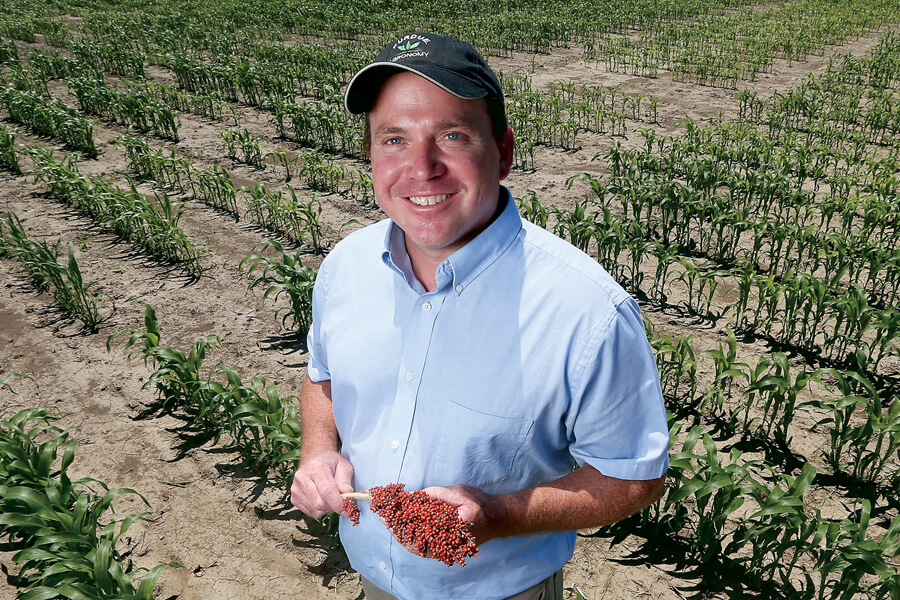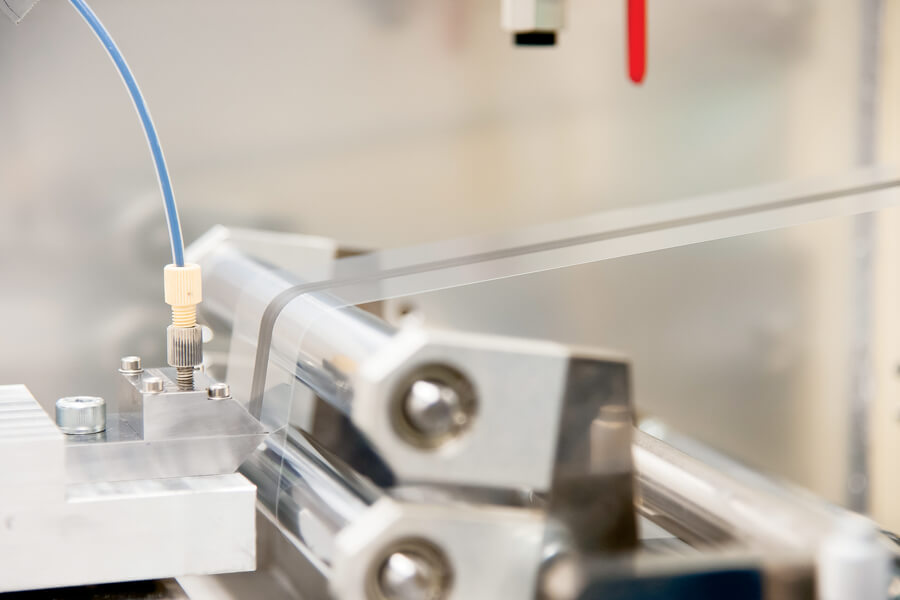
WHIN Network chairman Gary Henriott says the nearly $40 million grant will help a 10-county region become a global hub for agriculture and advanced manufacturing. The hope is that providing globally recognized infrastructure, using sensor and digital-based networks, will attract more global companies to the region.
Johnny Park, one of the nation’s premier agriculture technology entrepreneurs, leads WHIN as CEO. He has years of research experience in robotics, computer vision, machine learning and distributed sensor networks as a principal research scientist and research assistant professor at Purdue and has been awarded four patents in related areas. A 1998 graduate of Purdue, Park also earned master’s and doctoral degrees in electrical and computer engineering from the University.
WHIN’s goal is to create a prosperous economic ecosystem in the Wabash Heartland region, which includes 10 counties: Benton, Carroll, Cass, Clinton, Fountain, Montgomery, Pulaski, Tippecanoe, Warren and White. The long-term vision is to make the 10 counties the global epicenter for digital agriculture and next-generation manufacturing empowered by smart Internet of Things (IoT) platforms.
The grant also allows WHIN to collaborate with Purdue and Ivy Tech Community College to build and support “testbeds” for the development of sensors and digital-based network applications in agriculture. It provides additional support to Purdue’s Birck Nanotechnology Center for sensors and data analytics in service to the new testbeds and establishes training centers to educate students and retrain existing workers for the IoT field.

Sensors, Data Analytics and IoT Infrastructure
WHIN is setting the stage for successful widespread IoT adoption through the establishment of two additional testbeds on Purdue’s campus. These two testbeds will be invaluable for conducting advanced research, as well as providing educational and demonstration opportunities.
One testbed will be located within the Agricultural and Biological Engineering building now being renovated; once completed, this testbed will have a focus on farm machinery and equipment sensors and data analytics. The second testbed already has an IoT presence but is being enhanced. It is located at Purdue’s Agronomy Center for Research and Education (ACRE), which is a 1,408-acre farm located seven miles northwest of campus. It is utilized by over 50 researchers from eight departments, conducting approximately 180 research projects.
WHIN funding was recently applied to help significantly expand and streamline ACRE’s computing capacity. This capacity is critically important because researchers no longer have to take paper and pencil into a field, write down measurements, drive the information back to a building and key it into a desktop computer.
Now, they can simply punch data into a mobile device on-site and it is instantly transferred to the appropriate analytics application in Purdue’s supercomputer. This is vitally important because a typical investigation for one type of corn could account for 10 different characteristics. This means data from 450,000 samples for a single group of researchers studying a single type of corn variety can be rapidly gathered, aggregated, processed and transmitted back to Purdue’s supercomputer by leveraging a combination of wireless and edge computing technologies.
ACRE’s investment helps optimize other previous IoT innovations at ACRE, such as a high-speed weather tower connectivity for farm-scale wireless IoT; a semi-automated mobile IoT sensor platform, called a PhenoRover, which measures variations in crop performance; a wireless backhaul engineered to deliver outdoor wireless coverage throughout the entire property; and IoT-enabled sensors that measure atmospheric gases and transmit the information back to the supercomputer using Wi-Fi, decidedly accelerating access to analysis and actionable insights.
By investing in ACRE’s capacity, WHIN is significantly expanding digital agriculture research, education and demonstration opportunities throughout the region.
“These technologies replace a host of manual processes,” says Dennis R. Buckmaster, Dean’s Fellow for Digital Architecture, and professor of agricultural and biological engineering. “These capabilities enable researchers to focus on productive work, working smarter and having better outcomes. With these results, we will be able to help farmers do the same.”

Sensors Benefit Farms and Manufacturers
A critical strength for the WHIN team is its extensive collaboration and cooperation among a diverse range of researchers.
“We are not solving one problem at a time. We are tackling many challenges and many different levels all at once,” says Ali Shakouri, the Mary Jo and Robert L. Kirk Director of Birck Nanotechnology Center and a professor of electrical and computer engineering, who also serves as the lead for the WHIN-Purdue team.
Jan-Anders Mansson, the Distinguished Professor of Materials and Chemical Engineering, agrees, noting, “What researchers need is daily interaction between the two sides: simulation and manufacturing.” Through this collaborative approach, the team is already making progress toward the design of multiple soil sensors for agricultural use, as well as temperature and humidity sensors that can be applied for both poultry and manufacturing purposes. The electronic board design for IoT sensor nodes is complete, and a total of 40 sensor nodes have been developed. These will have applications for agriculture — by measuring soil moisture, temperature and nitrate — and machine health — by measuring temperature, humidity and vibration. The cost modeling for manufacturing soil nitrate sensors using roll-to-roll manufacturing, enabling the mass-production of sensors, is under way.
“Our success is due largely to our extensive collaborative efforts,” Shakouri says. Each week, the sensor and manufacturing teams meet, representing 12 faculty with 30 students. The data analytics and networking teams also meet weekly, representing approximately six faculty groups. The modeling group also meets regularly and has developed examples to calibrate its machine-learning algorithm to model an IoT infrastructure communication network for a low-powered sensor network. This will provide improved analytics that will benefit both manufacturers and farms.
Data analytics will play a big role in the future digital economy, he emphasizes. Community IoT testbeds are great resources not only to test new low-cost sensors, but also to experiment with new apps, partnerships and business models to help solve societal grand challenges and improve quality of life.
Bringing devices into actual field tests outside the lab has always been a challenge in thin films. “We need field data,” Shakouri says. “Once we see how the sensors behave, degrade and change in the environment, then we can correct for that and figure how to use their data optimally.” Field tests of smart thin films also prove a key ingredient for students.
The WHIN community IoT testbeds are providing unprecedented opportunities for students in many disciplines. From the beginning of a project, for instance, professors and students in biomedical engineering talk with their counterparts in manufacturing technologies. “Students who are trained in these interdisciplinary groups will be the future leaders in this field,” he says.
Additionally, the community testbed heightens connections between researchers and local businesses. “Often universities focus on research and breakthroughs, and we don’t spend as much time on the local ecosystems we need to build,” Shakouri says. “Our IoT testbed is a blueprint for how a land grant university can connect better to the local community in the 21st century. This is a place we want to bring technology and to keep our bright graduates in the region. There are a lot of discussions about the future of our region, and this project has been really eye-opening about the resources we have near us.”
WHIN Activities
Purdue’s Center for Regional Development (PCRD) is conducting four critical baseline studies for WHIN.
1 – An occupational cluster analysis for critical, WHIN-related jobs in the region.
2 – An economic impact analysis, with a focus on agriculture and manufacturing jobs in the region.
3 – A “digital-ready” study examining broadband-access available in various WHIN areas (based on FCC data).
4 – A quality-of-life survey to identify residents’ current opinions about the region.



